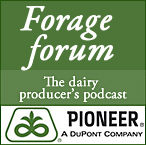Recently, Agriculture Deputy Secretary Kathleen Merrigan announced $50 Million for a new initiative to meet the Obama Administration’s promise to encourage more organic agriculture production. Funding for the initiative is being made available as part of the Environmental Quality Incentives Program (EQIP).
“Assisting organic producers is a priority of the 2008 Farm Bill as well as for Secretary Vilsack and the Obama Administration,” said Merrigan. “The objective of this initiative is to make organic food producers eligible to compete for EQIP financial assistance.”
The 2009 Organic Initiative is a nationwide special initiative to provide financial assistance to National Organic Program (NOP) certified organic producers as well as producers in the process of transitioning to organic production. Organic producers may also apply for assistance under general EQIP.
Under the Organic Initiative required minimum core conservation practices will be determined by specific resource concerns. The practices are: Conservation Crop Rotation; Cover Crop; Nutrient Management; Pest Management; Prescribed Grazing; and Forage Harvest Management. States must consider using any appropriate practice that meets the resource concern on a particular operation.
Applications received from organic producers or producers in transition to organic farming will be accepted under this initiative between May 11 and May 29. Applications will be ranked at that time.
To assist with eligibility questions there are two separate National Screening Tools for applicants (one for producers transitioning for the first time and one for certified organic producers transitioning additional land or adding additional conservation practices). Ranking criteria has been established based on resource concerns that link to the NOP objectives and the core conservation practices.
The USDA National Organic Standards Board (NOSB) meets twice per year and is primarily responsible for developing standards to be used in organic production. The NOSB also advises the Secretary on other aspects of implementing the National Organic Program which develops, implements, and administers national production, handling, and labeling standards for organic agricultural products. Deputy Secretary Merrigan helped create NOSB while working on the Senate Agriculture Committee. This is Merrigan’s first NOSB meeting since being sworn in as Agriculture Deputy Secretary.
The 2009 Organic Initiative will be administered by the Natural Resources Conservation Service. Interested producers should visit their nearest USDA Service Center to determine eligibility.

 Dairy Markets Week in Review
Dairy Markets Week in Review The dairy farmers and processors of the Iowa are proud to
The dairy farmers and processors of the Iowa are proud to 
 High moisture
High moisture  Congratulations to Arkansas dairy farmers Bill and Delia Haak and their family for being named
Congratulations to Arkansas dairy farmers Bill and Delia Haak and their family for being named  The Wisconsin Department of Agriculture, Trade and Consumer Protection (DATCP)
The Wisconsin Department of Agriculture, Trade and Consumer Protection (DATCP) 